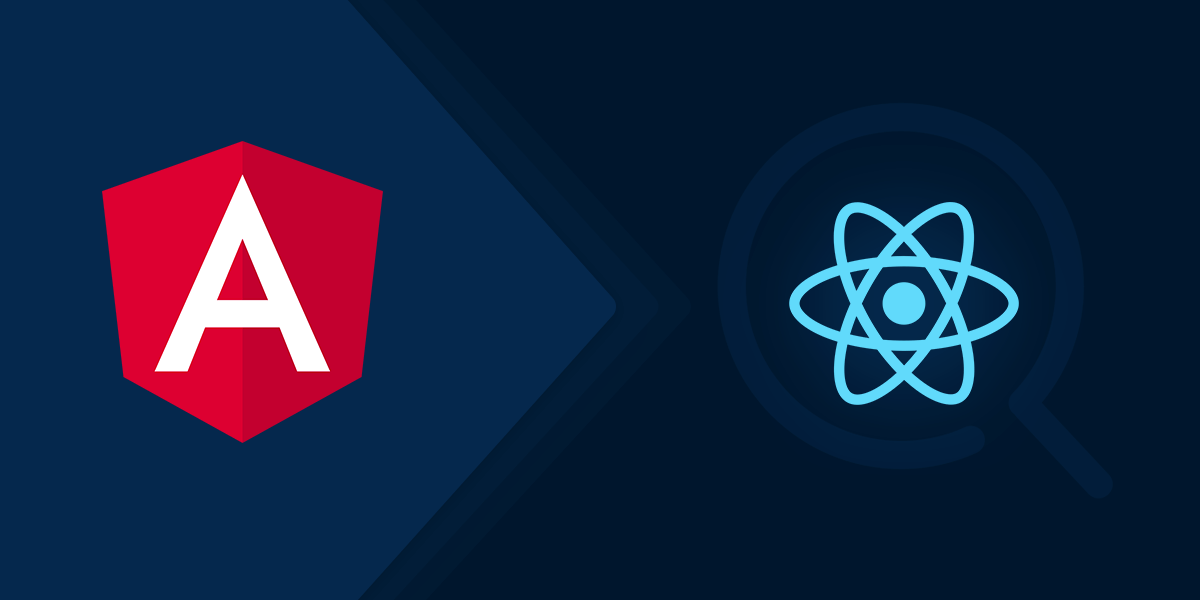
The choice between React or Angular drives many debates on the developer forums. Lost in the mass of information, it is not always easy to find your bearings very clearly when you are a junior in JavaScript development and you are looking for the best architecture or the best framework to get started. The goal here is not to choose a winner or a loser, but to present the advantages and disadvantages of each so that you can make an informed choice.
Note: We will not present here the advantages and disadvantages of Vue.js, still too unpopular on the market.
ANGULAR, the Google framework
You have to differentiate Angular from React by their radically different logic: while Angular offers an official JavaScript framework, React is a library that deals with views.
Angular offers many ready-to-use solutions and designs. The framework has undergone multiple transformations during its different versions. At the moment, we are already in its 6 th version (released on May 3, 2018), and the beta of version 7 is preparing to be released very soon. Angular 6 remains a continuation of versions 2 to 5, and differs from the very first version of Angular, which is called AngularJS. Indeed, from Angular2, the development team completely rewrote the framework to adopt a component-oriented approach and use Typescript.
Angular gives the possibility to make components in JavaScript . Its approach is rather modular and therefore allows “bootstrapper” of modules in an application, based on Webpack and especially on the use of observables . Familiarization with observables is therefore quite important for anyone wishing to specialize in Angular development.
To help develop a project more quickly, Angular is particularly appreciated for its very powerful CLI tool , which makes it scalable and makes it possible to generate skeletons of applications, classes, services and components from its own terminal. Angular remains an excellent solution for programming highly interactive web applications.
Pros and cons of Angular
BENEFITS OF ANGULAR
- A complete framework with elegant architecture
- Extensive documentation that allows developers to find all the necessary information quickly
- A large community, which always allows you to ask questions in case of blocking
- Constant and regular improvements (compilation less than 3 seconds for Angular 5)
- Bidirectional data association, which reflects the effects of each minor data change, eliminates the need for additional synchronization of view and model data, and minimizes the risk of errors
- MVVM (Model – View- View Model), which allows developers to work separately on the same application section using the same dataset
- A DI engine (dependency injection)
- The advantages of TypeScript: static and operational input verification, very efficient input functions
DISADVANTAGES OF ANGULAR
- Cumbersome language, complex syntax
- Specifics of TypeScript, which has a difficult learning curve
- The impossibility of changing frameworks along the way: an application must be developed in Angular from start to finish
- Problems migrating from one version to another. The upgrades are particularly difficult (although Angular 4, 5 and 6 are now backward compatible)
REACT, a bookstore developed by Facebook
React is different from Angular, because it is not a framework per se. It is a library developed by Facebook and based on a very large Open Source community.
React is also component oriented , but much less packaged than Angular. It thus leaves more freedom and it is possible to develop in classic JavaScript (classic or ES6 with babel support) or or TypeScript. Developers can use the leader module of their choice, making React work much more flexible.
To benefit from ready-to-use solutions, developers will be able to add a few modules to React so that it works like a standard framework. Redux and Flux are the most common and are essential for the ReactJS technical stack.
The main difference between Angular and React concerns state management. Angular has indeed a bidirectional data link integrated by default, while React is often augmented by Redux to allow a unidirectional data flow and work with immutable data. The two approaches are radically opposed, without it being possible to really determine a consensus on what is preferable between mutable / data link or immutable / unidirectional.
Advantages and disadvantages of ReactJS
ADVANTAGES OF REACT
- Much easier to learn than Angular. React requires a thorough review of its HTML basics and does not require complex syntax like learning TypeScript
- Despite this, React is focused on JavaScript by wrapping HTML in JS. Angular is more centered on HTML, which is less robust
- Flexibility and responsiveness (very fast integration for mobile via React Native)
- A real toolbox offering a very wide choice to developers
- 100% Open Source, lots of improvements and regular contributions from the developer community
- Reduction of the number of operations on the Document Object Model (DOM), optimization and acceleration of the update process (very useful for large databases)
DISADVANTAGES OF REACT
- Very little official documentation
- No engine for dependency injection
- Despite the lightness of the syntax, React requires in-depth knowledge to integrate the user interface into the MVC framework.
Angular and React therefore each have their advantages and disadvantages and are both highly demanded by employers.
If we have to compare their evolution on the job market, Angular experienced very strong growth between 2014 and 2016. Over the past two years, it would seem, however, that React is regaining the upper hand and is increasingly sought after by employers.

Comments are closed.